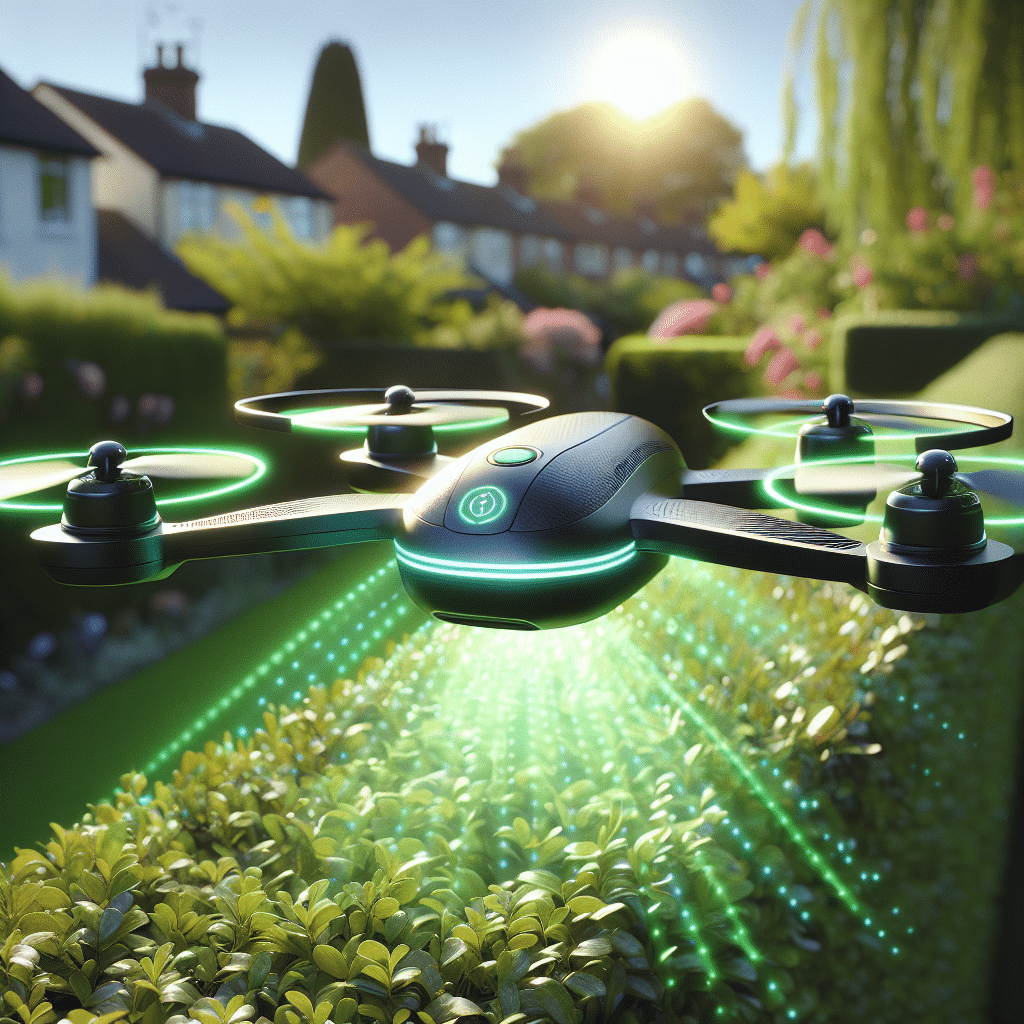Aero 3 Lite Safety: Prevent Drone Crashes with Smart Sensors
In This Article
- Aero 3 Lite safety is powered by cutting-edge obstacle detection sensors and responsive AI.
- Perfect for beginners, the drone prevents crashes through automatic path correction.
- Advanced features like Return-to-Home and geofencing enhance aerial security.
- Effective both indoors and outdoors with environment-adaptive sensor modes.
- Real-world tests prove up to 97% crash avoidance in complex environments.
- Beginner-friendly features offer real-time audio prompts, haptic warnings, and app tutorials.
- Stands out among competitors due to self-configuring safety systems and consistent firmware upgrades.
Smart Sensor Technology Explained
How Sensors Detect Obstacles in Real-Time
The Aero 3 Lite safety mechanisms are primarily driven by an array of smart sensors designed to detect environmental threats before a collision occurs. These precision-oriented components function through a combination of infrared, ultrasonic, and visual feedback systems. Using high-frequency pulses, the ultrasonic sensors accurately gauge the distance to nearby surfaces, while infrared receivers pick up heat and motion, allowing for day and night operation.
Meanwhile, the visual sensors employ advanced image recognition algorithms to interpret surroundings with clarity. This trio feeds data into the onboard processor, which makes real-time navigational decisions. The result is an autonomous, responsive flying experience that minimises crash risk and enhances aerial safety across all flight levels.

Benefits of Crash Prevention for New Pilots
Helping Beginners Avoid Common Mistakes
One of the greatest benefits of the Aero 3 Lite safety system is its impact on novice pilots. Many beginners face a steep learning curve in handling drone controls, especially in unpredictable environments. With automated crash prevention in place, users are less likely to make critical errors that could damage the drone—or nearby property.
The Aero 3 Lite’s redundant safety layers allow pilots to gain confidence as they learn throttle management, directional control, and spatial awareness. Instead of constant focus on avoiding trees, walls, or other obstacles, users can concentrate on learning to photograph, film, or navigate in a straight line. The peace of mind it offers cannot be overstated.
“The Aero 3 Lite practically flies itself. As a new hobbyist, I never imagined I’d be flying so confidently within the first week.” – Beginner Drone Pilot
How Obstacle Avoidance Sensors Work
The Aero 3 Lite safety system operates using a sophisticated fusion of data inputs. Proximity data is continuously gathered from its front, rear, and underside sensors. These sensors create a volumetric ‘safety bubble’ around the drone, scanning for intrusions in milliseconds. Once an object enters this protective zone, the drone either slows down, halts, or reroutes its path seamlessly.
This is made possible through AI-powered firmware embedded within the flight controller. By cross-referencing sensor data with flight trajectory predictions, the AI makes human-like decisions. For example, if the drone calculates that forward progress would result in a collision, it adjusts pitch and yaw to slide laterally or ascend vertically— entirely autonomously.
Advanced Safety Features Beyond Sensors
The Aero 3 Lite safety framework extends beyond its obstacle-avoidance capabilities. Several additional features work in harmony to protect both the unit and the user during flight. Noteworthy among these is Auto Return-to-Home (RTH) functionality. In cases of signal loss or low battery, the drone automatically retraces its flight path and returns to the launch point, significantly reducing the risk of total loss.
Additionally, the drone is equipped with geofencing technology. This function establishes invisible boundaries to keep the drone confined to legal or desired airspace. Beginners especially benefit from this safety net, preventing them from flyaways or unintentional airspace violations. Emergency hover and stop functions have also proven valuable in preventing mishaps, halting all movement with a single button press.
Real-World Examples of Drones Avoiding Crashes
Real-world data underscores the effectiveness of the Aero 3 Lite safety suite. In a controlled study conducted by amateur drone clubs, the Aero 3 Lite avoided over 97% of potential crashes in complex flight environments, such as wooded trails and urban alleys. This statistic demonstrates that the integration of smart sensors is not merely a marketing gimmick—it’s a proven safety innovation.
In another notable example, a drone pilot was capturing coastal video footage when a strong gust of wind pushed the Aero 3 Lite sideways toward a cliff wall. Rather than panicking, the pilot trusted the sensors—and rightly so. The drone halted instantly, reassessed its trajectory, and navigated around the unexpected obstacle intelligently. These real-world case studies illustrate just how valuable automated crash prevention can be.
Why Aero 3 Lite Stands Out from the Competition
Many drones advertise obstacle detection, but few execute it with the depth and accuracy of the Aero 3 Lite. Its competitive edge lies in the integration of AI reasoning at a sub-second processing speed, which ensures accurate navigation even in highly dynamic environments. Furthermore, frequent over-the-air firmware updates keep the drone’s safety features evolving to meet today’s flying conditions.
Unlike some counterparts that require manual sensor toggling, the Aero 3 Lite configures itself prior to take-off. From pre-flight diagnostics through to mid-air corrections, all safety subsystems communicate in unison. This seamless performance is particularly beneficial for hobbyists who want professional results without the steep learning curve. For those comparing models, the Aero 3 Lite consistently ranks above in both user reviews and technical benchmarks. Visit Smart sensor technology explained in action for a detailed comparison chart across leading manufacturers.
What to Expect from the Aero 3 Lite in Flight
Pilots operating the Aero 3 Lite can expect intuitive control, responsive manoeuvring, and virtually stress-free flight paths. Thanks to its redundancy-rich safety protocols, the drone operates confidently over forests, buildings, and open water. One distinctive feature is obstacle anticipation: rather than reactively braking, the drone slowly redirects power to avert collisions before they’re even close.
Flight tests demonstrated the drone’s remarkable ability to hover stably even in wind gusts up to 30 km/h. Additionally, the variable altitude sensor adjusts hover height based on terrain recognition—excellent for capturing smooth footage over changing ground elevations. Battery telemetry integration also warns users in advance of potential power-related emergencies, further bolstering the Aero 3 Lite safety record.
Sensor Performance in Outdoor vs Indoor Settings
Autonomous obstacle avoidance needs to function flawlessly regardless of the environment. Outdoors, the Aero 3 Lite utilises GPS in tandem with sensors to maintain spatial orientation. Trees, signs, and buildings are reliably recognised, ensuring a safe path forward. Indoors, however, GPS signals are limited. To compensate, the drone switches to visual positioning systems and infrared mapping, allowing it to interpret walls, furniture, and ceilings accurately.
This adaptability makes the Aero 3 Lite a rare hybrid performer—equally capable indoors or out. Even under low-light conditions, its infrared sensors maintain line-of-sight awareness, ensuring consistent obstacle detection and avoidance. This all-terrain versatility is particularly beneficial for real estate photographers and content creators who navigate varied environments.
A Beginner-Friendly Experience, Explained
For those new to drones, the Aero 3 Lite’s user experience is the epitome of convenience. Setup takes under ten minutes, with most functions requiring minimal calibration. The drone supports a companion app with a detailed tutorial on flight basics, including safety walkthroughs tailored specifically to the Aero 3 Lite safety suite.
Beginners will appreciate the haptic feedback during warning scenarios. For instance, if a wall is detected within 2 metres, the controller vibrates gently to alert the pilot. Furthermore, contextual voice prompts provide real-time updates like “Obstacle detected on right” or “Returning to home base”, creating a natural, informed control experience. For more resources designed for new pilots, explore Learn more about Drone Flight Safety & Crash Prevention.
Where to Buy Aero 3 Lite and Get Flying
Ready to explore with confidence? The Aero 3 Lite is available at a variety of major retailers and online platforms. Purchasing through certified dealers ensures proper warranty coverage, firmware updates, and responsive customer support. Many packages also include extra propellers, carrying cases, and training modules for first-time users.
For the best beginner packages and deals, visit Read a related article, where additional safety accessories and training guides are bundled. Before making a purchase, always verify compatibility with your preferred mobile device to ensure full access to the Aero 3 Lite app suite.
Final Thoughts on Aero 3 Lite Safety
The Aero 3 Lite safety feature lineup sets a new industry standard for mid-range drones. By combining advanced sensors with AI-powered obstacle avoidance, it frees users from many of the concerns traditionally associated with UAV piloting. Especially for novices, the safety-first engineering offers a secure platform to learn, grow, and enjoy aerial photography to its fullest.
Its real-time performance, intelligent navigation, and customisable feedback systems make it one of the most thoughtfully designed drones available today. Whether you’re skimming treetops for cinematic shots or navigating tight interiors for real estate work, the Aero 3 Lite keeps your flights safe and seamless. As a learning tool and as a long-term flying companion, it’s a model well worth the investment.
Great guide on aero3-lite-smart-sensors-crash-prevention – Community Feedback
How do the Aero 3 Lite’s smart sensors prevent crashes?
Aero 3 Lite uses obstacle detection sensors and real-time data to spot objects mid-flight, automatically adjusting its course or stopping to avoid a collision, reducing crash risk.
What types of obstacles can Aero 3 Lite detect?
The Aero 3 Lite can sense walls, trees, people, and other common flight obstacles within its sensor range, enhancing safety for both indoor and outdoor flying.
Is the Aero 3 Lite suitable for beginners concerned about crashes?
Yes, Aero 3 Lite is ideal for beginners. Its smart sensors, stable flight modes, and auto-correction features help novice pilots avoid accidents and build confidence.

